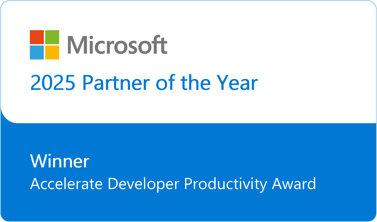Modernization is a strategic imperative—but without a clear roadmap, it can quickly become a chaotic, resource-draining exercise. Most organizations face a sprawling landscape of applications, services, and workloads, each with varying levels of business value, technical debt, and modernization potential. The question isn’t whether to modernize—it’s what to modernize first, and why.
This is where Elevate’s Portfolio Management and Workload Prioritization capabilities shine. They transform complexity into clarity, enabling organizations to make informed, data-driven decisions about where to invest their time, talent, and technology.
The Challenge: Too Many Workloads, Not Enough Insight
Imagine an enterprise with hundreds of applications—some mission-critical, others legacy remnants. Without a structured approach, modernization efforts often fall into one of two traps:
- The “gut feeling” trap: Decisions are made based on anecdotal input or executive pressure, not data.
- The “analysis paralysis” trap: Teams spend months gathering information but never reach consensus on what to prioritize.
Both approaches lead to wasted effort, missed opportunities, and stalled progress.
The Solution: Intelligent Portfolio Management
Elevate introduces a systematic, automated way to assess and prioritize workloads. It combines business context, technical data, and DevOps maturity to generate a modernization priority quadrant—a visual map that plots workloads by:
- Business Value (Y-axis): How critical is the workload to revenue, strategy, or customer experience?
- Modernization Potential (X-axis): How feasible is it to modernize based on current architecture, dependencies, and team capabilities?
Each workload is represented as a bubble, with size indicating scope and color denoting target modernization category. This quadrant becomes the foundation for strategic planning.
Key Features and Benefits
1. Automated Prioritization
No more spreadsheets or manual scoring. Elevate ingests business and technical data to automatically calculate prioritization scores. These scores are configurable and can be overridden when needed—giving teams flexibility without sacrificing structure. Saving time, reducing bias, and ensuring consistency across teams.
2. Contextual Analysis
Workloads are evaluated using customized questions tailored to the organization’s environment. This includes:
- Business context: Revenue impact, strategic alignment, urgency
- Technical context: Architecture, dependencies, modernization readiness
- DevOps context: Tooling, practices, pipeline maturity
Enabling decisions are grounded in reality—not assumptions.
3. Visual Decision Support
The quadrant view allows stakeholders to zoom into specific segments (e.g., high-value, high-potential workloads) and drill down into workload details. It’s not just a dashboard—it’s a decision engine. Facilitating alignment across business, IT, and executive teams.
4. Integration-Ready
The system integrates with tools like CloudPilot, Movere, Excel, and other data sources to enrich analysis and streamline workflows. Leveraging existing investments and avoiding duplication of effort.
Real-World Example: Prioritizing for Impact
Let’s say a financial services company is preparing to modernize its application portfolio. They have 250 workloads, ranging from customer-facing portals to internal reporting tools.
Using Elevate, they:
- Ingest workload data from existing inventories and assessments.
- Apply contextual weighting based on business strategy and technical feasibility.
- Generate a quadrant map that highlights 40 workloads with high business value and high modernization potential.
- Filter and zoom into the top-right quadrant to identify quick wins.
- Create a modernization roadmap with estimated effort, target architecture, and ROI projections.
Within weeks, they move from uncertainty to execution—with full stakeholder buy-in.
Why It Matters
Modernization isn’t just about updating technology—it’s about making smart investments. Portfolio management and workload prioritization help organizations:
- Maximize ROI by focusing on high-impact workloads
- Accelerate delivery by avoiding analysis paralysis
- Reduce risk by aligning modernization with business goals
- Enable scale by creating repeatable, data-driven processes
It’s the difference between guessing and knowing. Between reacting and leading.
What’s Next
In the next post, we’ll explore how the Elevate enables Platform Engineering and Template-Driven Delivery—standardizing modernization through reusable, vetted templates that reduce risk and accelerate time-to-value.
NEXT:
Part 3: In Engineering the Future — Platform Engineering and Template-Driven Delivery
BACK:
Part 1: The Innovation Imperative — Why Modernization Can’t Wait









